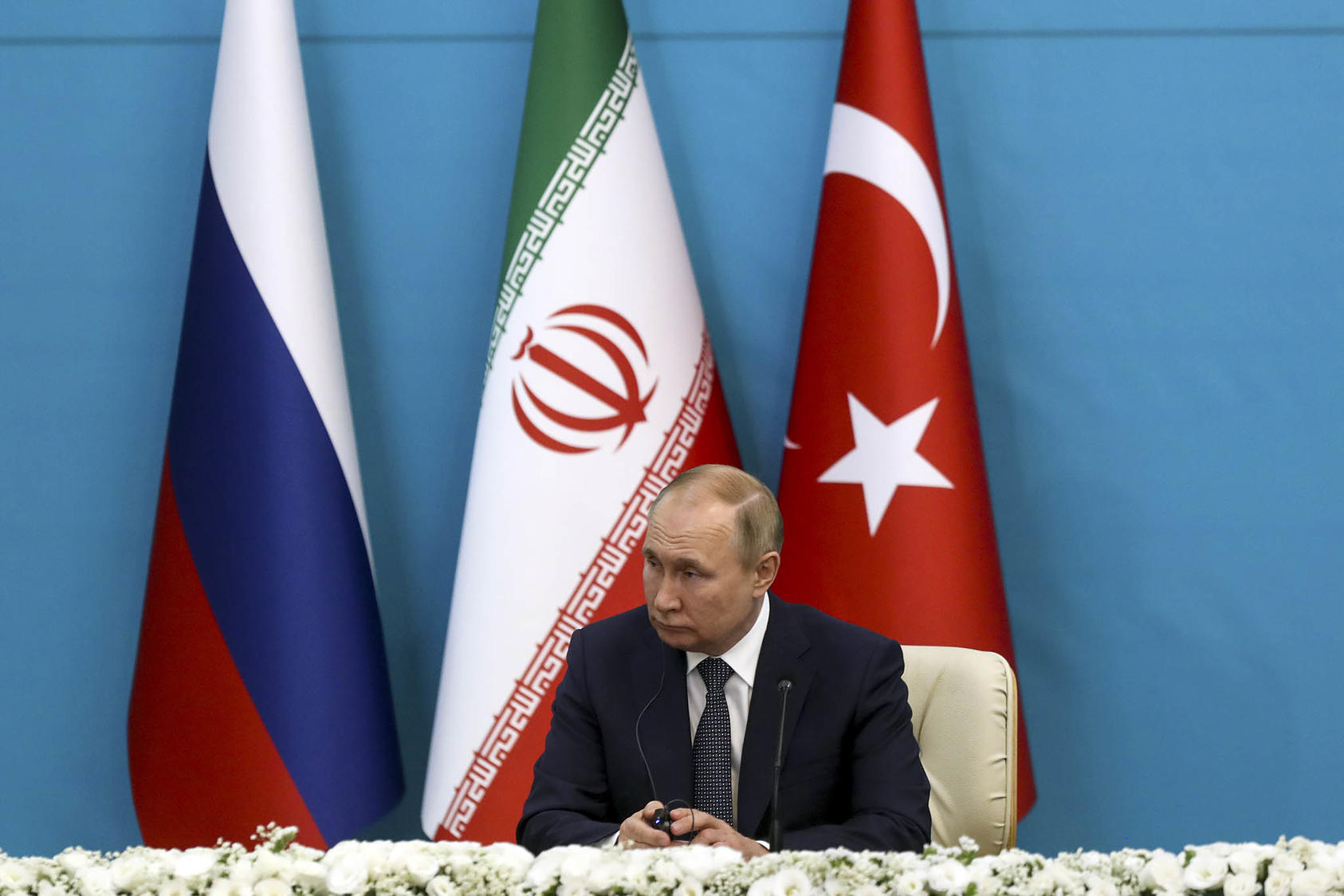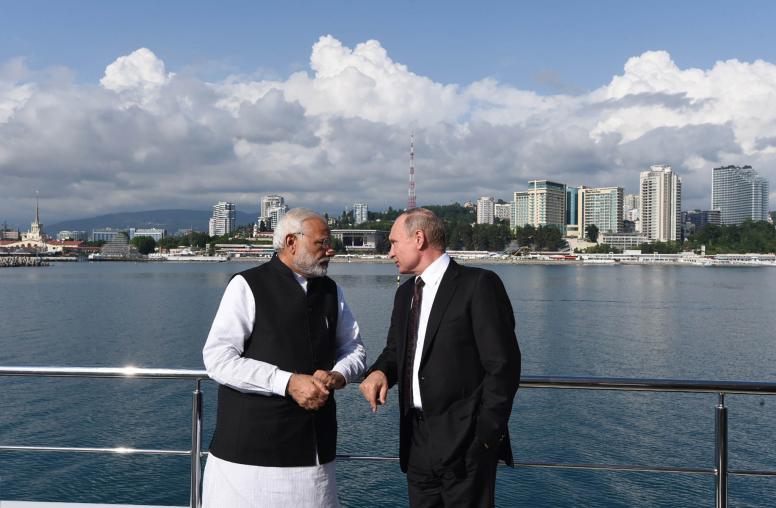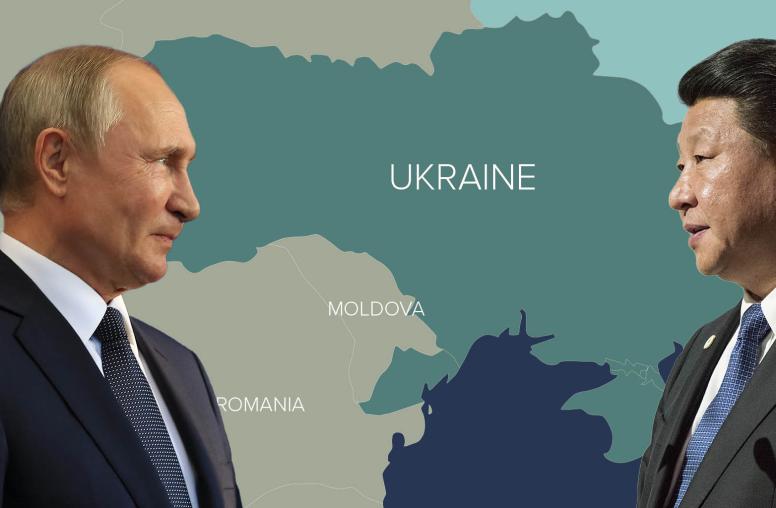What You Need to Know About Russia’s New Foreign Policy Concept
Moscow is betting on the emergence of a new, multipolar order, shorn of U.S. leadership.
On March 31, Russia released a new “foreign policy concept,” articulating Moscow’s global priorities and focus for the future. The Kremlin’s last foreign policy concept was released in 2016, two years after its invasion of Ukraine and annexation of Crimea. In the years since, Moscow has demonstrated its increasing disdain for the rules-based international order and antagonism toward the United States and its European NATO partners. The 2023 document is Russia’s first comprehensive foreign policy statement since its February 2022 invasion of Ukraine, revealing how Moscow sees the war a year later and its vision for an emergent multipolar world.

USIP’s Mary Glantz and Heather Ashby dissect the key takeaways from the document and its implications for Russia’s war against Ukraine.
What does the foreign policy concept reveal about how Russia views the world in 2023 and beyond? Why does this matter for the United States?
Glantz: Russia’s 2023 foreign policy concept seems to represent the consolidation of a gradual evolution in Russian world view since the 1993 release of its first one. Certain consistent elements continue through each of the six concepts put out by the Kremlin: 1) Russia is a great power; 2) the world is moving toward “regionally centered power relations”; 3) the United States (and, later, the collective West) represent a challenge to this movement toward multipolarity; and, 4) the United Nations, based upon the U.N. Charter and “other norms of international law,” should play the decisive role in interstate relations.
What this means is that Russia sees the world today in terms of a global competition for power and influence. On the one side is the United States-led “Western” world that insists upon global adherence to its “rules-based order” derived from Western values and practices, which are presumably ideals not encoded in legally binding treaties. On the other side is the rest of the world, which adheres to more “traditional values,” wants to be governed by international law (defined by treaties and other legally binding agreements alone and led by the United Nations) and rejects the unipolar world the United States is allegedly committed to preserving.
Ultimately, this foreign policy concept outlines nothing less than Moscow’s repudiation of the current order and the United States’ leading role in it.
Ashby: Russia continues to consider itself a great power within the international system, deserving of respect even as it wages an illegal war of aggression against Ukraine. According to its foreign policy concept, Russia believes that it is playing a distinct role in advancing a multipolar system, helping to balance relations among great powers. Additionally, Russia quite vexingly argues that it has a “special responsibility for maintaining peace and security at the global and regional levels.” Yet, this document points to Russia committing itself to fundamentally different principles and values, which ultimately hinder cooperation on preventing and resolving violent conflicts.
Does the foreign policy concept provide insights into Russia’s war against Ukraine and the conflict’s future course?
Glantz: Although Ukraine is only mentioned once, Russia’s war on its western neighbor is present throughout the concept, both explicitly and implicitly. Explicitly, Russia asserts that its war against Ukraine was “to protect its vital interests” and insists that it is ready for “dialogue and cooperation” if the West is ready for a relationship defined by mutual respect for each other’s interests.
Implicitly, Russia makes it clear that its right to dominate its nearest neighbors is a key foreign policy priority. Russia’s stated reasons for launching this war — protecting the self-declared states of the Luhansk and Donetsk People’s Republics and the Russian-speakers living in them — are echoed throughout the document. It states that to carry out its strategic foreign policy goals, Russia will “ ... provide assistance to Russian allies and partners ... irrespective of whether or not the allies and partners receive international recognition ... .” In addition, Russia will “protect abroad, in a comprehensive and effective way, the rights, freedoms and legitimate interests of Russian citizens and entities; … [and] develop ties with compatriots living abroad and render them full support in exercising their rights, ensuring protection of their interests and preserving all-Russian cultural identity.”
It is important to note that this last point is not entirely new to the 2023 concept, as protecting Russians and establishing ties with compatriots has been a consistent Russian foreign policy goal. However, the 2023 concept adds the phrase “in a comprehensive and effective way,” suggesting that the Ukraine war is not an anomaly, but a message.
References to protecting “allies and partners” and Russian security appear repeatedly throughout the document. Russia is trying to argue its invasion of Ukraine is simply self-defense, protecting Moscow and its allies from alleged U.S.-led Western efforts to undermine Russian security.
The concept amplifies this in its discussion of regional issues, when it asserts that Russia’s priorities in the “near abroad” (a term, which defines Ukraine and other post-Soviet states only in terms of their relationship to Russia) include “preventing the instigation of ‘color revolutions’ and other attempts to interfere in the internal affairs of Russia’s allies and partners”; “countering deployment or reinforcement of military infrastructure of unfriendly states and other threats to Russia’s security in the near abroad”; and “preventing and countering unfriendly actions of foreign states and their alliances, which provoke disintegration processes in the near abroad and create obstacles to the exercise of the sovereign right of Russia’s allies and partners to deepen their comprehensive cooperation with Russia ... .”
Again, implicit in these priorities is the Russian assumption that they have a right to a sphere of interest in which their security concerns, not the sovereignty of their neighbors, are the priority. In essence, this is the heart of the issue in the Ukraine war. This, together with the concept’s assertion that dialogue is possible only if Russia and the West respect each other’s interests, makes clear Russia’s determination to continue prosecuting this war and disregarding Ukraine’s sovereignty.
Why does it matter that Russia is pivoting away from the United States and Europe and focusing on building ties with China, India and the Global South?
Ashby: The Russian government’s foreign policy strategy under President Vladimir Putin has sought to expand relationships with other countries beyond Europe and the United States. These partnerships have focused on energy, arms sales, trade in commodities, security cooperation and education among other areas. Moving forward, Russia will seek to strengthen its relationships with countries in the Global South as well as with China, India, Turkey and Iran. Russia’s language throughout the concept aims to wrap itself in longstanding narratives from developing countries about inequality within the international system, legacies of colonialism that prevent countries from being treated equally alongside the West and critiques of liberalism. Those dynamics will have negative repercussions for the international system, particularly in how countries can collectively engage and cooperate to address pressing global issues that pose existential threats to humanity such as climate change, pandemics and great-power war.
Glantz: The 2023 foreign policy concept marks a dramatic escalation of Russian attempts to pivot away from Europe and define a new world order. At least rhetorically, this document is a Russian assertion that it does not need Europe, the United States, nor the standards and values they articulate. Russia styles itself as a “unique country-civilization and a vast Eurasian and Euro-Pacific power” with deep historical ties “with the traditional European culture and other Eurasian cultures … .” With this turn of phrase, Russia is identifying itself as a unique pole in the multipolar world it is striving for.
Even the layout of the document highlights this trend, with Europe and the United States dropping to the bottom of its list of regional priorities and China and India moving closer to the top. In addition, the language throughout references neocolonialism, exploitation and other terms designed to resonate among former European colonies in the Global South. With this foreign policy concept, Russia seems to be both courting support from non-Western countries and laying out its vision for a new world order. In that way, it is not so much a pivot to a different neighborhood as an assertion of the need to start over completely and see the world in different terms.
It is a direct challenge to the United States’ world view.



